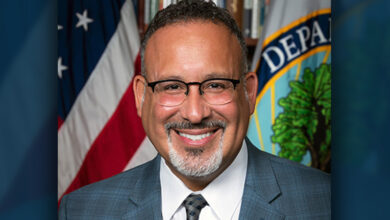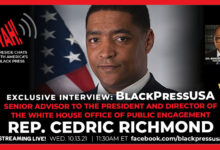
Dr. Vernell Bennett-Fairs named 13th president of LeMoyne-Owen College
By TSD Newsroom, New Tri-State Defender
Dr. Vernell Bennett-Fairs has been named the new president of LeMoyne-Owen College. A higher education veteran, Dr. Fairs takes over at Memphis’ only HBCU on January 5th.
Most recently vice-president of Student Affairs at Delta State University in Mississippi, Dr. Bennett-Fairs has 25 years of higher-education experience. She was selected from a pool of 78 candidates during the College’s six-month search.
Her appointment follows Dr. Carol Johnson Dean’s tenure as the College’s interim president for nearly two years after the LOC Board of Trustees voted not to renew the contract of Dr. Andrea Miller.
“We selected Dr. Bennett-Fairs because of her vast experience in higher education and we are especially impressed with her student recruitment successes,” said Johnny Pitts, LOC Search Committee chair. “LeMoyne-Owen College is poised to continue to advance with her at the helm.”
As president, Dr. Bennett-Fairs will be responsible for providing executive leadership with overall responsibility for strategic planning, fundraising, administration, and management of all aspects of the College’s components.
“The Board of Trustees commends the Search Committee for conducting a stellar search process and selecting such a qualified candidate in Dr. Bennett-Fairs,” said Patricia Covington, LOC Board of Trustees chair. “We are looking forward to even more transformative work for LeMoyne-Owen College under her leadership.”
At Delta State University, where she served for four and half years, Dr. Bennett-Fairs’ accomplishments included increasing student enrollment, realigning the college’s scholarship budget and assisting in attracting students from over 50 countries.
She also served in a similar role at Kentucky State University, where she is credited with instituting innovative recruitment strategies such as a coordinated recruitment program and faculty teaching days in high schools.
LOC notes among its 2020 accomplishments a $40 million endowment established by the Community Foundation of Greater Memphis and securing a partnership with Methodist LeBonheur Healthcare to expand its health and wellness services for students.
COMING: Curtis Weathers, The New Tri-State Defender’s new education columnist, interviews Dr. Vernell Bennett-Fairs.
(For more information, visit www.loc.edu.)
This article originally appeared in the New Tri-State Defender










